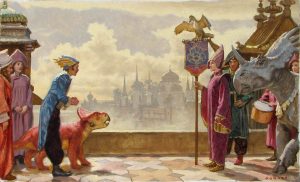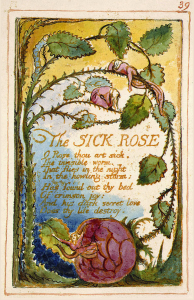When reading Shaun Tan’s The Arrival, I couldn’t help but draw comparisons to another graphic narrative that happens to be childhood favorite of mine: Dinotopia. For those unfamiliar with the book, it follows a similar plot arc, in which human characters are thrown into a new world with strange and unfamiliar customs and practices. There is a language barrier, so the protagonists struggle to understand their novel environment, and they are aided by those around them and their dinosaur companions. There are a handful of narrative parallels — adjustment into a new home, the frustration that follows culture shock, fantastical companions (creatures and dinosaurs), and ultimate assimilation — but what really stood out to me was the similarity between the art.
For reference, here is a page from Dinotopia
While it lacks the sepia hue, I feel that it is aesthetically similar to Shaun Tan’s illustrations. In the background, one can see a grand and uniquely constructed city; in the foreground, one sees a wordless exchange between two delegates, each with an interesting creature attending them. There are bizarre and unrecognizable insignias throughout the book, much like the signs in The Arrival. In both graphic narratives, the human characters are dressed more or less abnormally.
While Dinotopia has accompanying words, I feel that The Arrival‘s wordlessness offers a different perspective on an identical sentiment. I feel that the protagonists in each are in awe of their surroundings — in a sense, they are “speechless”. The Arrival takes this speechlessness literally and excludes text altogether, while Dinotopia channels this awe through scarce dialogue and annotated diagrams. Both books relate the tale of very human characters in very inhuman (as we know it) environments. In this translocation can be found the tension (and resolution) of the two texts.


